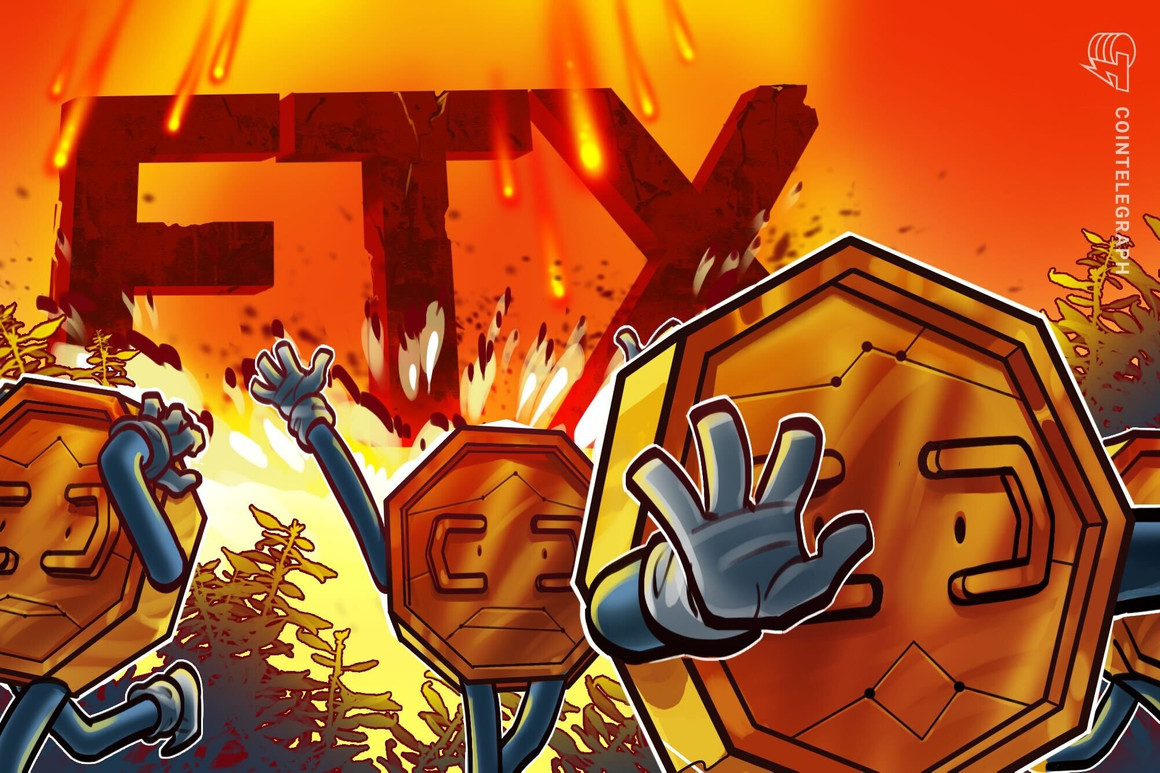The FTX collapse was bad, but how bad? Almost from the moment that the Bahamas-based exchange suspended cryptocurrency withdrawals in early November — and three days before it filed for bankruptcy — the historic comparisons started flying.
Circle CEO Jeremy Allaire tweeted on Nov. 8 that FTX was “Lehman’s moment,” referencing the 2008 collapse of investment bank Lehman Brothers, which sparked a global financial panic. This analogy stuck, at least over the past four weeks. Even United States Treasury Secretary Janet Yellen employed it last week, telling DealBook:
“It’s a Lehman moment within crypto, and crypto is big enough that we’ve had substantial harm with investors.”
But, other business parallels have been drawn as well. FTX’s crash might have been more like the 2008 Madoff scandal, for example, given that both scamster Bernie Madoff and FTX founder Sam Bankman-Fried had a knack for “charming regulators and investors” and thus distracting them “from digging in and seeing what’s really going on,” as former Federal Deposit Insurance Corporation chair Sheila Bair told CNN.
Others suggested FTX’s precipitous bankruptcy actually was more like the Enron Corporation’s implosion of 2001. Among common elements, according to former U.S. Treasury Secretary Lawrence Summers, as reported by Bloomberg, were:
“The smartest guys in the room. Not just financial error but — certainly from the reports — whiffs of fraud. Stadium namings very early in a company’s history. Vast explosion of wealth that nobody quite understands where it comes from.”
Binance chief strategist Patrick Hillman drew similarities between Bankman-Fried and Theranos founder Elizabeth Holmes, whom he described as “completely delusional.”
And on it went.
Historic precedents can be elusive
“There’s no perfect comparison, of course,” Timothy Massad, a research fellow at the Kennedy School of Government at Harvard University and former chairman of the U.S. Commodity Futures Trading Commission, told Cointelegraph.
The key question, said Massad, who also served as the Assistant Secretary for Financial Stability of the U.S. Department of the Treasury, helping to manage the government’s response to the 2008 financial crisis, will it actually lead to the sort of regulation badly needed by the cryptocurrency industry, or:
“Will it just be a bigger version of Mt. Gox, which burned a lot of people but the crypto world just kind of went on.”
It isn’t entirely clear, either, what is even meant by a “Lehman moment.” Does it refer to a sudden and unexpected financial collapse? Or does it mean a bankruptcy that sets off a domino effect — until an entire industry sector or even the global economy is shaken?
“Lehman was the moment everyone recognized the seriousness of the Global Financial Crisis,” Kevin Werbach, professor of Legal Studies and Business Ethics at the Wharton School, told Cointelegraph. “It was shocking to see a long-standing pillar of Wall Street disappear overnight.” It also led to future regulatory action. “Lehman’s failure suggested there was a serious gap in risk management in financial services, which led to the Dodd-Frank Act.”
Recent: Brazilian crypto industry gets regulatory clarity amid global uncertainty
In the same way, it was “shocking” in early November to see FTX, “one of the largest and most visible digital asset exchanges collapse suddenly,” said Werbach, adding that now “there are similar concerns that new legislation is needed for digital assets.”
Writing in the New York Times, Kevin Roose said the Lehman bankruptcy “made it clear to lay people just how much trouble Wall Street was in.” The crypto sector’s Lehman Moment could signal that “that the industry, already reeling from a brutal year of losses, may be in for even tougher times.”
Is Lehman the right comparison?
Upon further reflection, however, is Lehman the right comparison? The storied investment bank’s collapse, after all, shook the global economy, not just a small financial subsector. There’s a question of scale. FTX has potentially lost investors billions of dollars — $10 billion to $50 billion, by some estimates. But, Lehman became a symbol of the subprime mortgage meltdown marked by economic losses in the trillions, according to the GAO.
“FTX’s collapse may send ripples through crypto, but it is not bringing down the traditional financial system. In this sense it seems to me more similar to Enron/Theranos/Madoff than with Lehman,” Hanna Halaburda, associate professor in the department of Technology, Operations and Statistics at New York University’s Stern School of Business, told Cointelegraph.
Still, “spillover” to the real economy may not be what is meant by “Lehman moment” as currently used, Elvira Sojli, associate professor of finance at the University of New South Wales, told Cointelegraph:
“What Yellen means with ‘Lehman moment,’ is not that we’ll see a Lehman spillover from Wall Street to Main Street. She is referring to the restructuring and added regulation in the banking industry due to the collapse of Lehman.”
In any event, “I do not think the FTX collapse will spill into the real economy,” added Sojli. “People did not borrow/mortgage their homes to invest in crypto, so the effect will be limited.”
Massad added, “Secretary Yellen said it was a Lehman moment within crypto. She clearly is not suggesting it will cause comparable damage to the entire financial system, but rather that it was an overleveraged firm whose collapse shows the need for better regulation of the entire sector.”
Even this attenuated Lehman comparison may not work, however. What if the FTX case is not a matter of incomplete or ineffective regulation, like Lehman Brothers, but simply one of out-and-out fraud? If so, it may be more like Enron’s 2001 bankruptcy, the largest in U.S. history at the time. That is, the leaders of both FTX and Enron knew they were doing something wrong and illegal — but they did it anyway.
“Enron was doing something plainly against the rules — laws and regulation — and Lehman Brothers was doing things according to laws and regulations, but the rules did not restrict wrongdoing,” said Halaburda. As for FTX, it is “an example of going against the rules that we already have, rather than rules being bad.”
There is evidence, for instance, that suggests Bankman-Fried was using FTX customer custody accounts to support his affiliated business, Alameda Research — almost as if it were his personal piggy bank.
“FTX appears to be a story of massive fraud and financial mismanagement, which is analogous to Enron, Madoff, Theranos, and more recently, Wirecard in Europe,” Werbach told Cointelegraph. “Most of those, however, were isolated incidents. Theranos didn’t mean that other medical diagnostics companies should be scrutinized, nor was there major financial fallout across the healthcare sector.”
Werbach views Enron as probably the closest analogy to FTX, at least on the fraud side, “because it [Enron] occurred around the same time as a series of other scandals such as Worldcom and Adelphia.”
The Sarbanes–Oxley Act of 2002 was passed in the U.S. to crack down on the kinds of accounting fraud that Enron and some of its contemporaries engaged in. Given that FTX’s unraveling followed the May collapse of Terra and later Celsius, it arguably “raises questions about the practices of other major players in the crypto sector,” Werbach suggested. A legislative solution could be coming.
What about Theranos? “Bankman-Fried is like Elizabeth Holmes in some respects — a wunderkind who claimed to be doing good and who appears to have fooled a lot of investors. But was he engaged in fraud from the start?” asked Massad, adding:
“The relevance of the Enron and Theranos analogies turns on whether FTX’s implosion was due to fraud and deception more than to gross negligence and mismanagement, and we don’t know yet.”
“I don’t think there is a better comparison” than Lehman, opined Sojli, “other than maybe LTCM,” i.e., Long-Term Capital Management, the heavily leveraged hedge fund that collapsed suddenly in 1998 after several years of outsized gains. LTCM’s board included many notables, including Nobel laureates Myron Scholes and Robert Merton. The Federal Reserve Bank of New York eventually arranged a $3.625 billion bailout of creditors because it feared a cratering of the larger financial system.
As for the crypto sector post-FTX, “There will be consolidation and a lot of self regulation as well as some push for external regulation to these markets,” predicted Sojli.
Why bother with business analogies?
Why do we draw these historic likenesses — are they even useful?
“People always like to make these sorts of comparisons — it’s a way of simplifying an event into something that resonates with people,” explained Massad. On one level, they are just a bit of fun. But they carry risks too. If badly drawn, comparisons can “obscure the details, which are important in terms of next steps.”
“They give a false sense of understanding,” added Halaburda. “What is really important is that the regulators take a careful look at this particular case,” i.e., FTX.
For example, the Terra crash, a sort of FTX precursor, was arguably a failure of technology — an under-collateralized algorithmic stablecoin simply didn’t work. But FTX’s undoing may be something different, less innocent and more premeditated.
“There are already laws and regulations that should have applied in this case,” continued Halaburda. “The regulators simply need to clarify which ones they are. FTX took people’s deposits — it makes sense to have them comply at least with brokerage requirements that assures security of custody.”
Recent: The impact of CBDCs on stablecoins with Bitget’s Gracy Chen
Massad believes historical comparisons like these can motivate people to change for the better:
“I am hoping this is like the stock market crash of 1929 — obviously not in the sense of affecting the broader economy, but in terms of making people realize the need to strengthen federal regulation.”
After all, state money service laws, “under which crypto trading venues claim to be regulated,” at least in the U.S., “are about as effective in regulating crypto as state blue sky laws were in regulating the stock market prior to the crash, and the crash led to passage of the federal securities laws,” Massad concluded.
Source: https://cointelegraph.com/news/was-the-fall-of-ftx-really-crypto-s-lehman-moment



